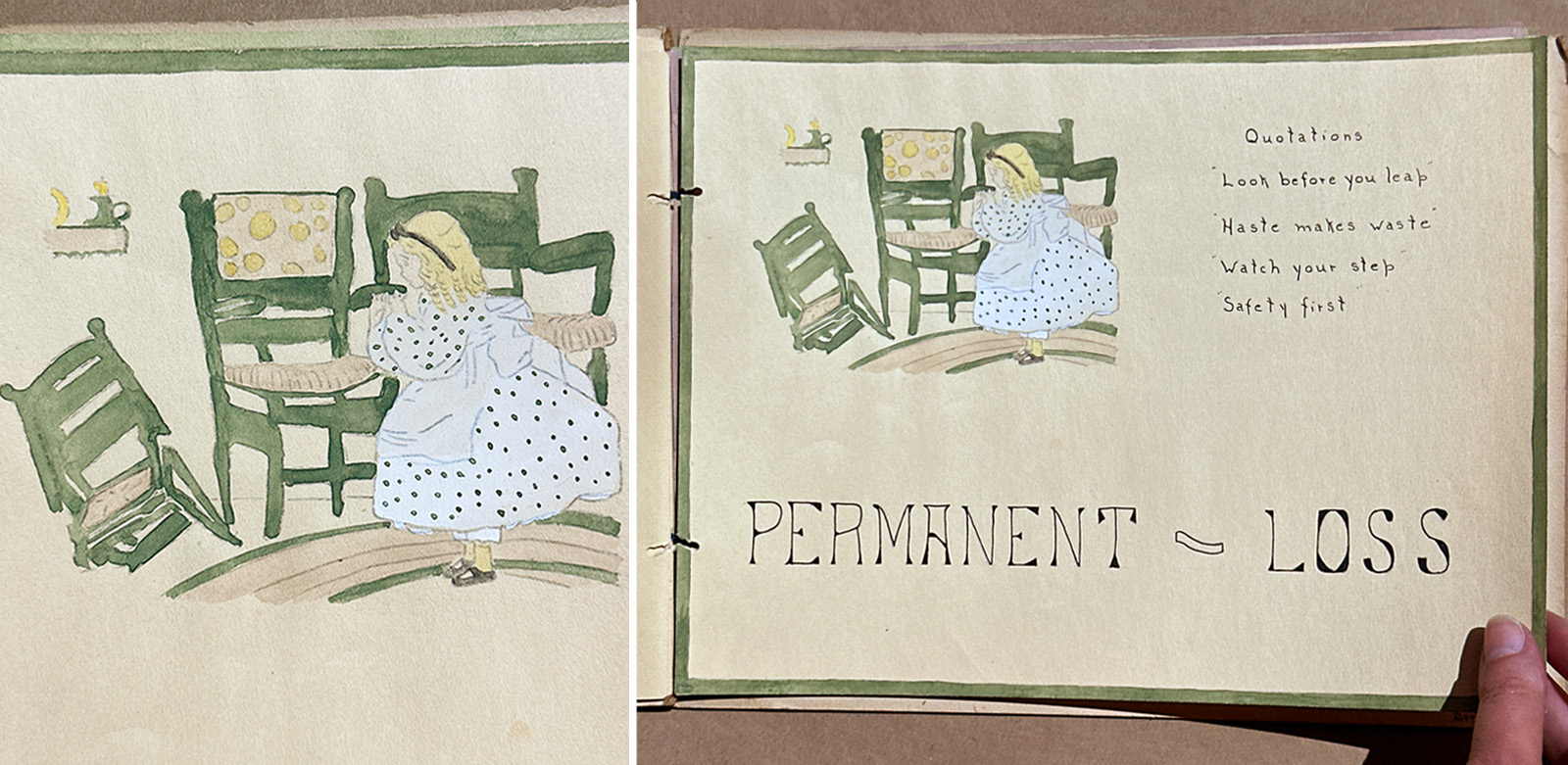July 14, 2025
By Amber Winick, Wolfsonian research fellow
There are a number of mysteries surrounding Mother Play, a nearly 100-year-old hand-bound, hand-illustrated book in the collection. But one thing is for certain: it reveals how the role of the mother was expanding in the early 20th century.
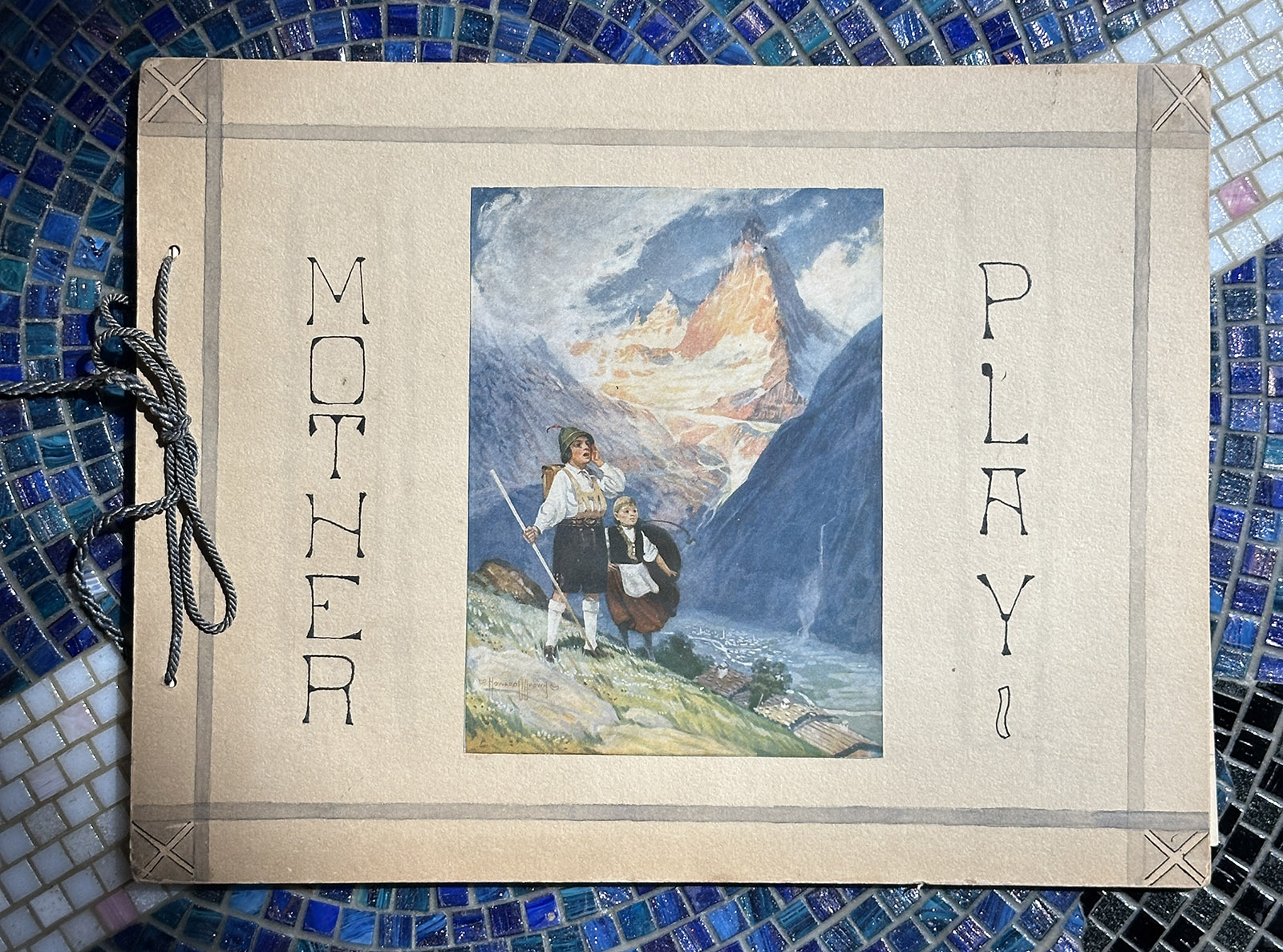
German educator Friedrich Froebel, the creator of the kindergarten movement, penned the original version of Mother Play in 1844 (titled Mutter- und Koselieder [Mother Play and Nursery Songs]). The book is structured around everyday family life and includes illustrations, verses, and song to help inspire playful educational and spiritual interactions between mothers and children. Froebel encouraged mothers and budding kindergarten teachers alike to create their own versions, both as guides and as family keepsakes.
Play is the highest stage of the child's development . . . the purest, most spiritual product of man at this stage, and it is at once the prefiguration and imitation of the total human life—of the inner, secret, natural life in man and in all things. It produces, therefore, joy, freedom, satisfaction, repose within and without, peace in the world.
— Friedrich Froebel, Friedrich Froebel (Die Menschenerziehung [1826]; trans. The Education of Man [1885])
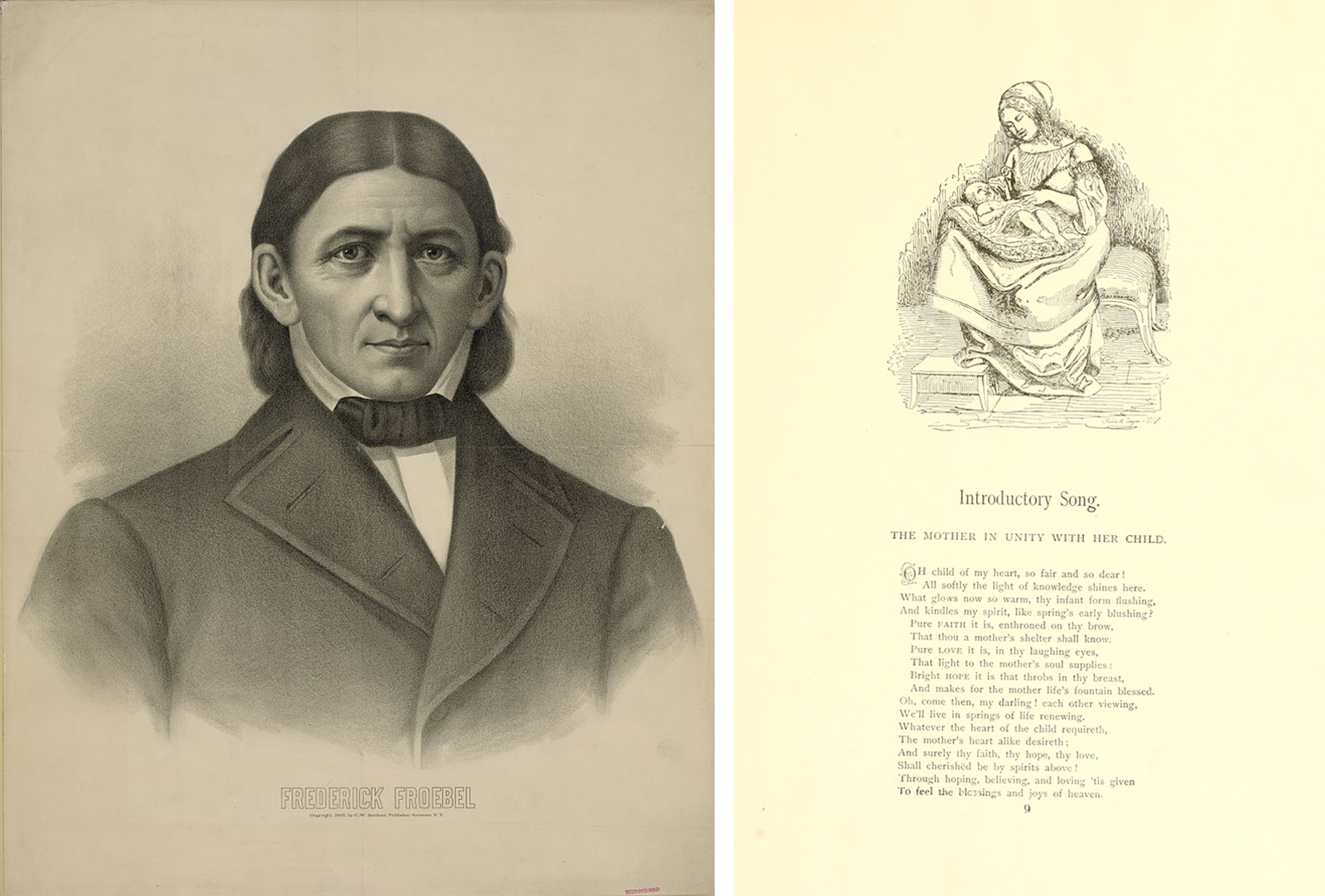
The role of the mother expanded as thinkers like Froebel developed new understandings of childhood and the way children develop. Froebel rejected the prevailing view of children as empty-headed and in need of memorization and drills. Instead, he saw them as active, curious learners capable of understanding the world and their environment. Children's curiosity and appetite for mastery, Froebel believed, began at birth and were best achieved through play. Froebel encouraged mothers of young children to view play as a learning activity within the home, and to involve their children in domestic life and gardening, engaging with them by singing songs, reciting nursery rhymes, and telling stories.
Froebel's Mother Play orients mothers as at-home educators for their children prior to entering kindergarten, which they would do between three and six years of age. Playful and purposeful interaction in the mother–baby dyad was an extension of Froebel's goals for early learning.
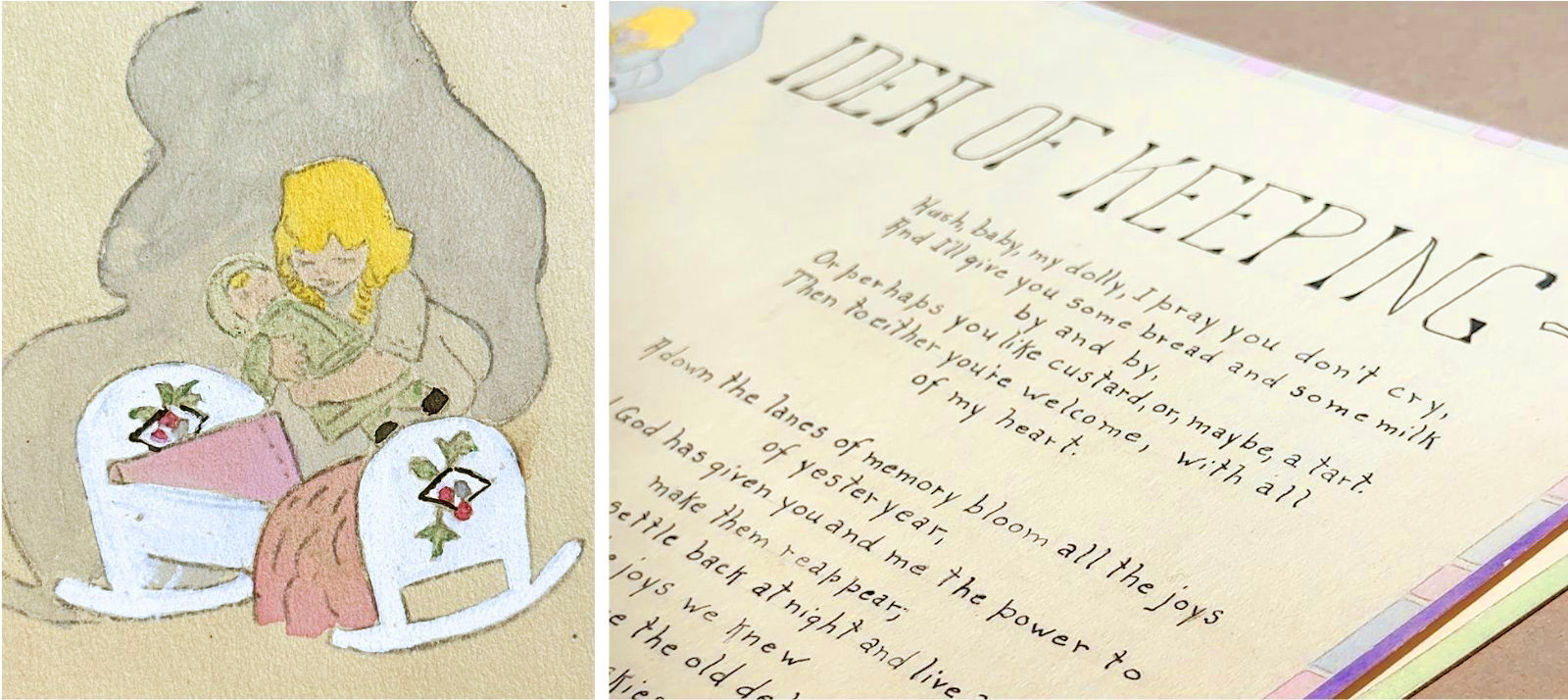
As Froebel's bold vision for childhood education spread across the globe, Mutter- und Koselieder was translated widely and reproduced in countless homes. "Kindergarten," meaning "children’s garden" in German—was not only the name of Froebel's first school, but has come to represent Froebel's approach to early social and educational development, in which young children would learn best through songs, play, storytelling, hands-on activities, and the natural world.
This particular version of Mother Play in the collection came by way of Doris Jacoby, who we believe lived in the state of Georgia. Jacoby carefully rendered text to accompany illustrations in pencil, watercolor, collage, and gouache. While we can't say for certain whether it was used within her family, the playful rhymes, stories, and the thoughtful commentary she includes reveal how definitions of the mother had evolved by the 1930s, when the book was made. The job expanded beyond the realm of day-to-day caregiving and domestic chores to that of an educator, a spiritual guide, someone capable of bringing joy, wonder, and even peace on Earth.
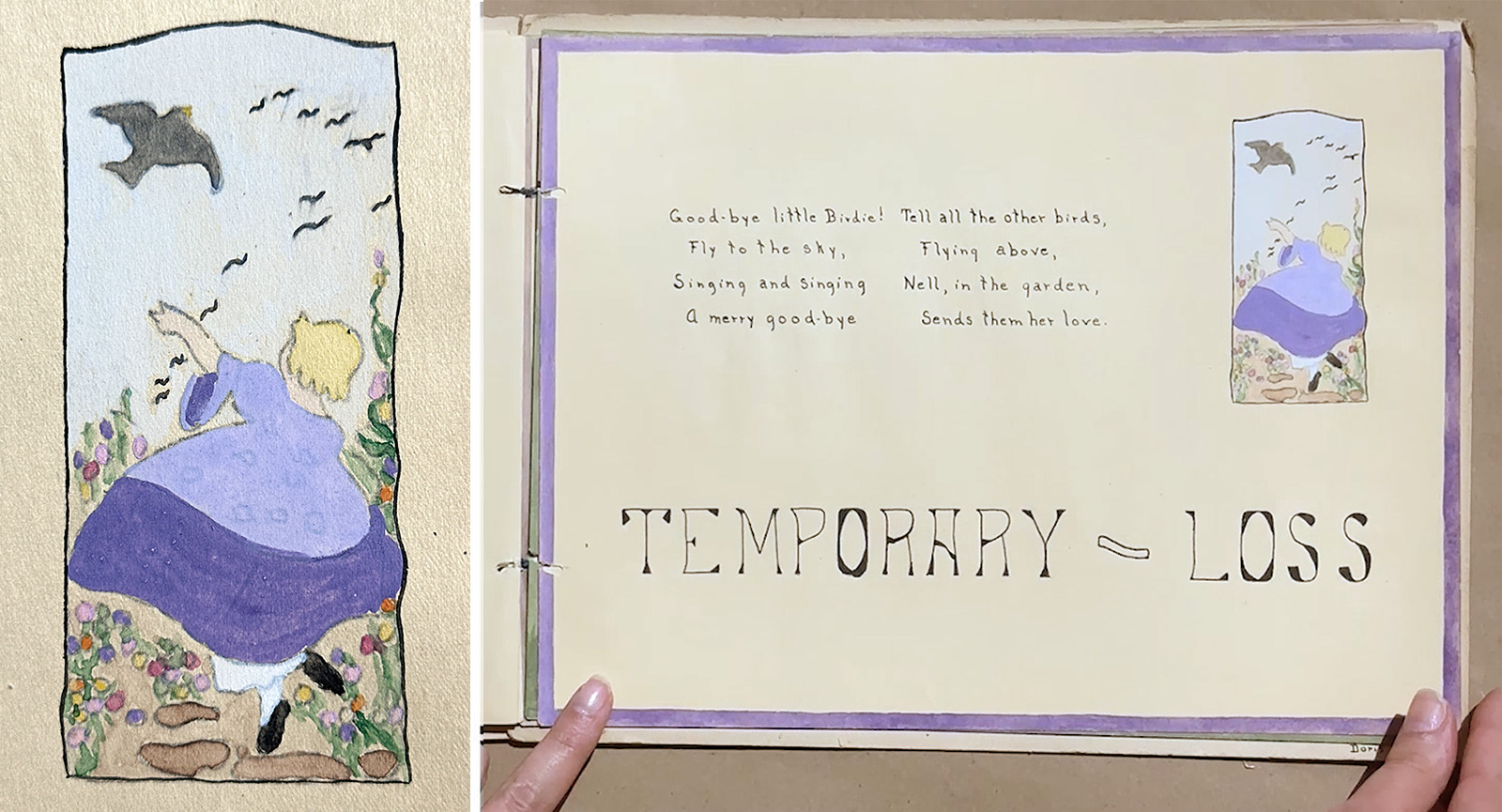
As the kindergarten movement spread internationally, mothers and teachers began making their own collections of nursery rhymes, songs, and illustrations. Doris Jacoby's version reflects Froebel's educational philosophy, but with a notable emphasis on themes of loss, finitude, and impermanence—perhaps her way of reflecting on the fleeting nature of childhood. However it was used, her Mother Play is a powerful expression of motherhood as meaningful practice. With lean text and a confident hand, its pages elaborate how a mother could be a first teacher and a home could be a space for learning, weaving in a number of deeply-felt spiritual lessons for good measure.
